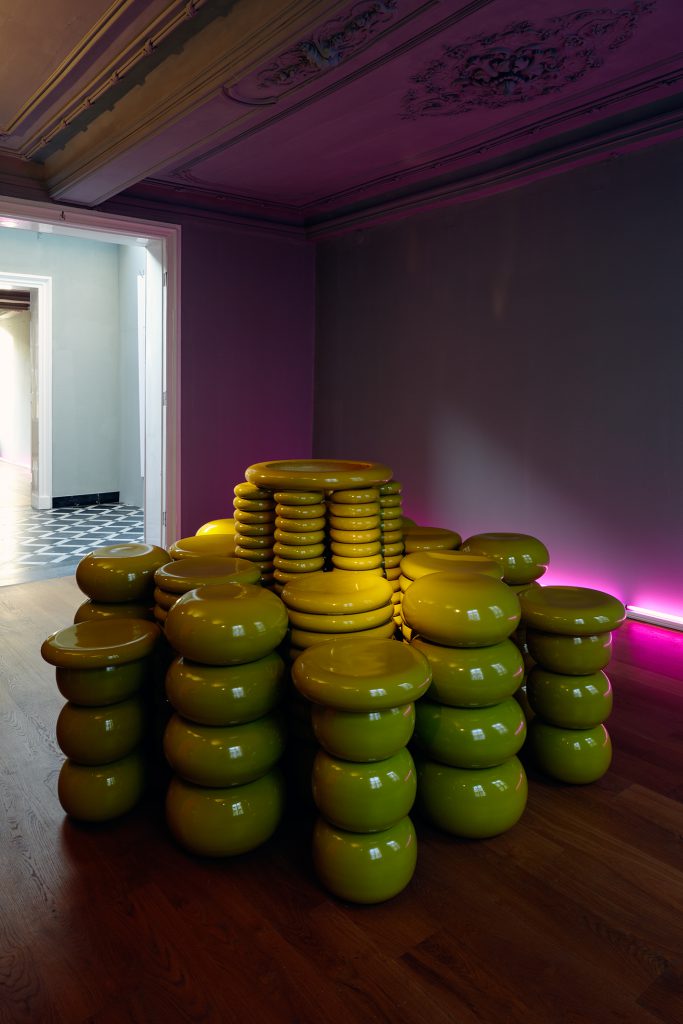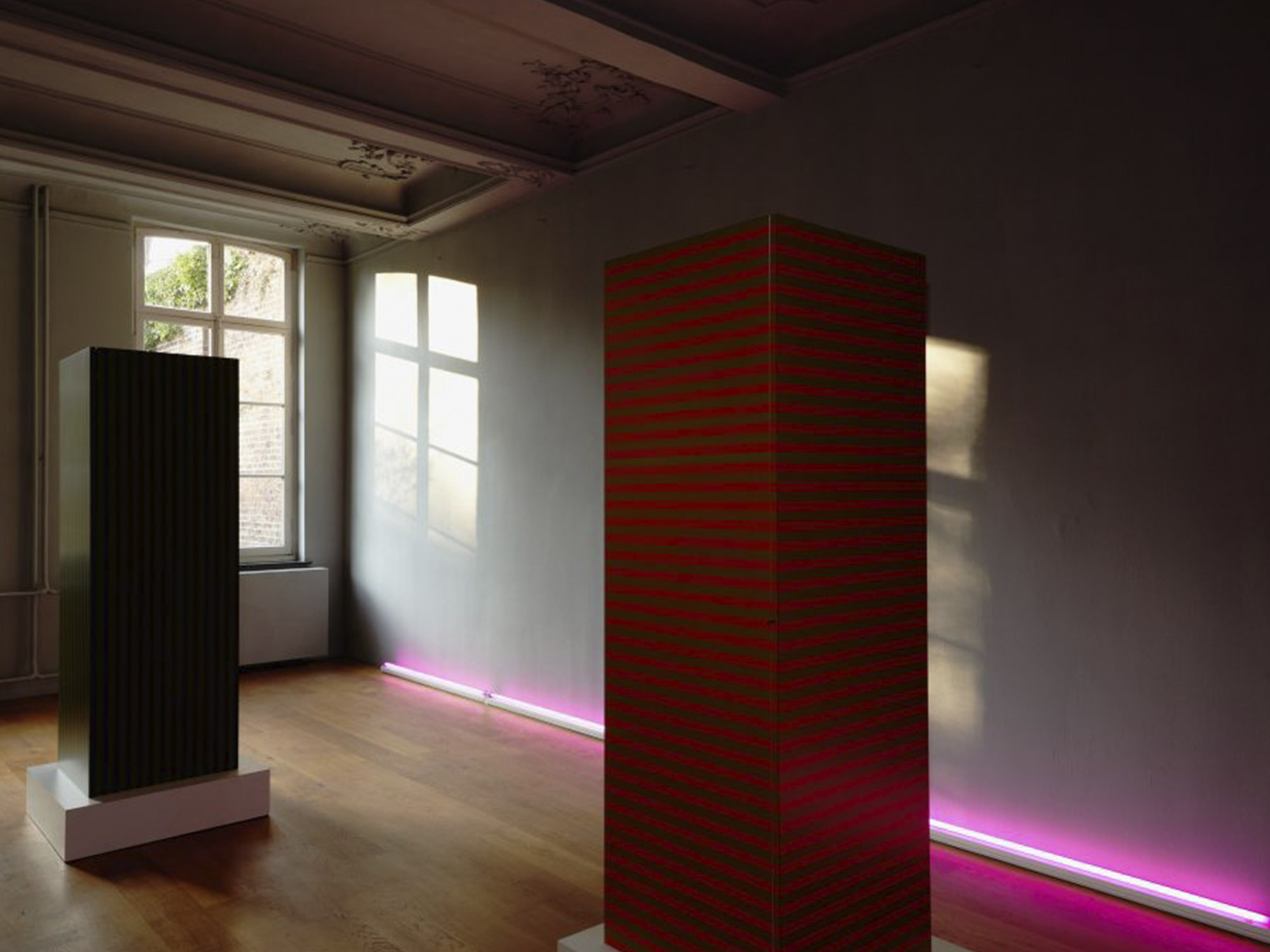With this exhibition of several works by Ettore Sottsass (Innsbruck 1917 – Milan 2007), all dated 1969, Marres presents a new position in the investigation of the 20th century and the idea of avant-garde. After The Russian Schizorevolution, which focused on an avant-garde from St. Petersburg in the period 1985-1995 and Depression, which reflected on the 20th century from an economical and psychological perspective, this exhibition presents several specific objects by an architect and designer who represents the idea of avant-garde par excellence. Time and again, Sottsass broke with an existing value system in order to formulate alternative concepts originating in a radical approach to the social and cultural function of objects.
Central in We Were Exuberant and Still Had Hope are three variations of the Superbox, an object that came into being between 1965 and 1967. The Superbox is special in that it was never actually produced and only exists as a photographed model and as an exhibition prototype. The Superbox resembles a closet that rests on a base, completely fitted with a striped surface of laminate, a material that was introduced for the first time with the Superbox. Marres presents three Superboxes, coming from the exhibition Miljö för a ny planet (Landscape for a new planet), which took place in the National Museum in Stockholm in 1969. We Were Exuberant and Still Had Hope is reminiscent of this exhibition, from which next to the Superboxes also the monumental ceramic ‘altar’ is presented.
In the oeuvre of Sottsass, the Superbox takes a unique place and possibly marks a fundamental moment in the life of the designer, whose oeuvre covers a period of nearly seventy years. A period which runs parallel to the history of the 20th century with two world wars, the war in Vietnam, important social and political changes, the rise of industrialization and consumerism. A century that is characterized by artistic shifts, initially associated with modernism and later with postmodernism. The famous work by Sottsass – aesthetically eclectic, bizarre, yes maybe even ugly – reflects the preceding century in a most non-conformistic way. His designs, even functional designs like the Valentine typewriter, are the result of profound deliberations and reflections concerning the status of the object in relation to man and his social, cultural and ideological environment; ideas that are documented in his many texts, drawings and notes. Exceptionally original and at times indisputably romantic, Sottsass is the philosopher under the designers.
Sottsass designs the Superbox in the middle of his working life, following several journeys through India and the United States of America.
In the US he discovers American modernism, which shows him that ‘production’, different from the way Bauhaus conceptualized it, is not so much a practical, but first and foremost a cultural phenomenon. The United States was ‘pop’; consumerism had penetrated every layer of its culture and new technologies and production processes merged with artistic expressions. In the US Sottsass meets the Beat-poets, and befriends Allan Ginsburg, a Marxist, who is seen by writer Jack Kerouac as the representative of the ‘dark side of the new vision’. Central in the work by the poets of the Beat Generation is their rejection of bourgeois values. Their poems give expression to an inner search, for which street-language is used – ‘no ties, but jeans, tennis shoes, sexual freedom and drugs’. These libertine ideas would subsequently initiate the contra-culture of the sixties.
In India Sottsass is confronted with an age-old culture that, to him, seems to be more profoundly connected with life and where death is still embraced as an integral part of life. For Sottsass, this contrasts starkly with the consumerism of the post-industrial Italy of the sixties.
The design of the Superbox is strongly influenced by both encounters. Sottsass begins to lean on the idea that objects should be ‘tools in order to slow the consumption of life down’. The Superbox, a simple box with a smooth surface of laminate and always placed in the middle of the space, presents itself as a mix of ‘pop’ and Eastern spirituality. It is a box that can take several functions and can therefore be seen as a nomadic object. This way, the Superbox should not be seen as a regular functional object but more as a meta-closet, a supra-box. The placement of the Superbox as the centre of a space inspires to experience this space as a cosmic fact and not as a private room. It is a totem, which is common and irrational at the same time and simultaneously possesses a strong material and immaterial quality. The Superbox is by definition a paradox that represents a fascination for the consumer culture as well as a critique on the devastating effects of materialism.
The exhibition title refers to Sottsass’ own reflection on his work and that of his contemporaries in the Italy of the fifties and sixties. It is an expression of the productive force of the avant-garde pur sang: enthusiastic and hopeful.











